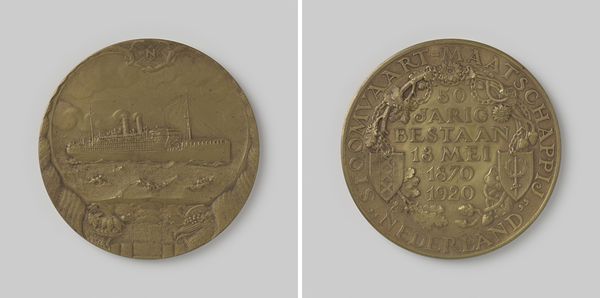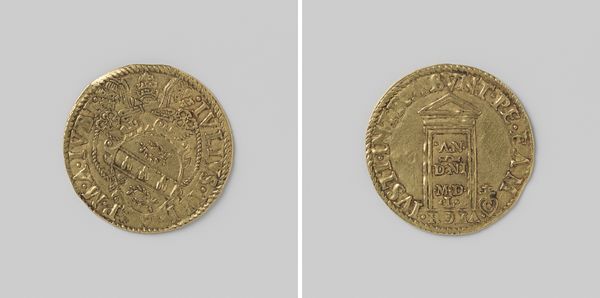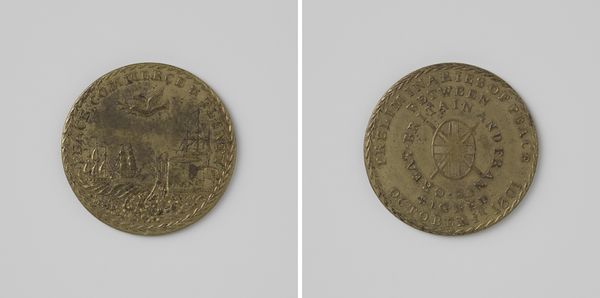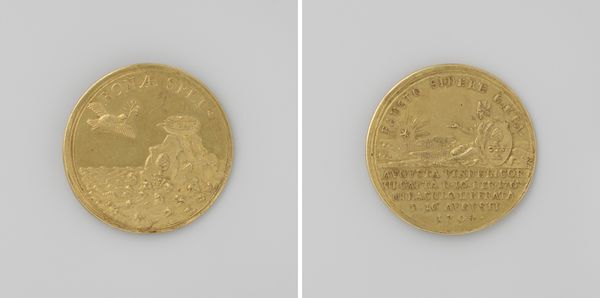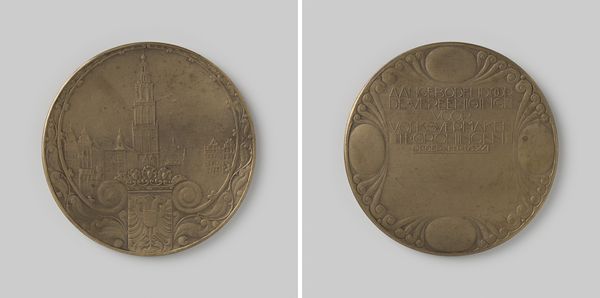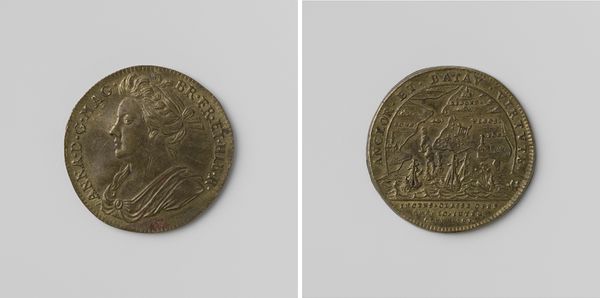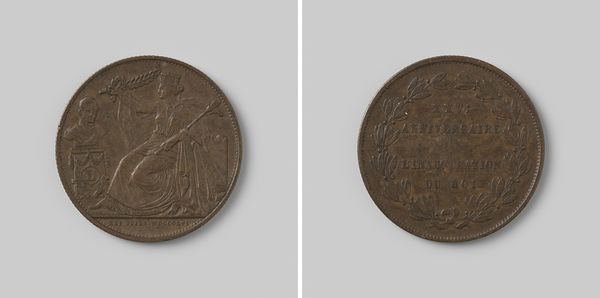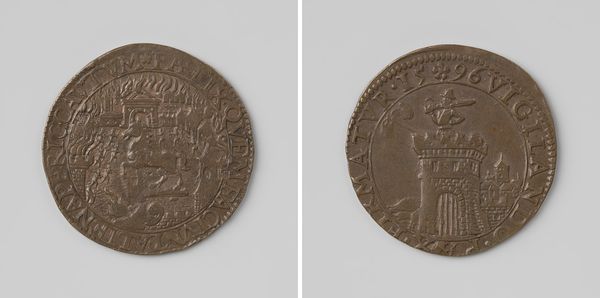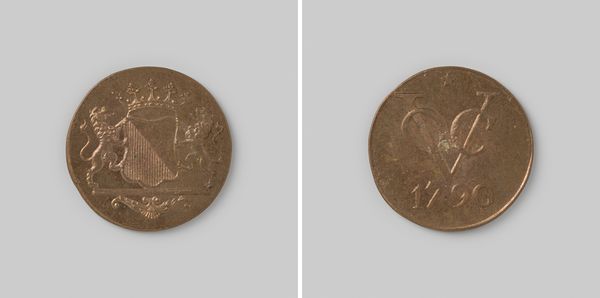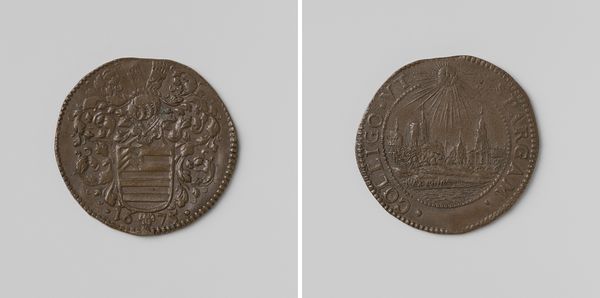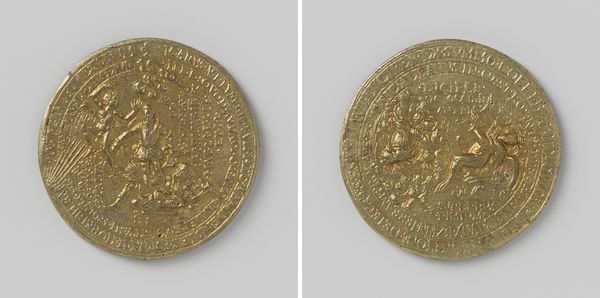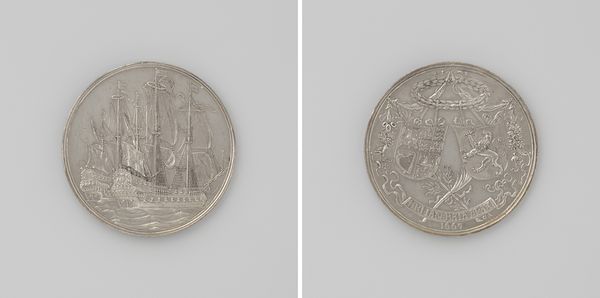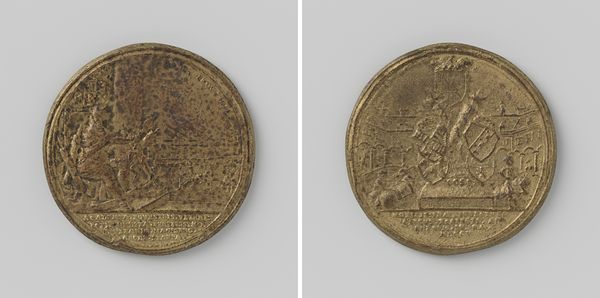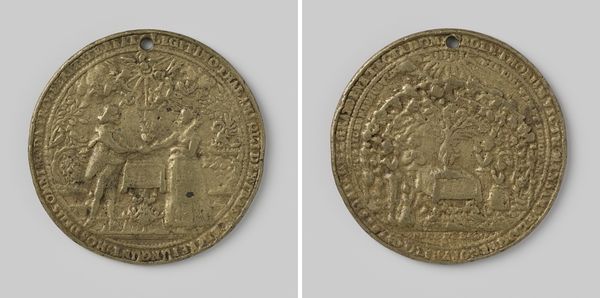
Vijftigjarig bestaan van de Stoomvaart Maatschappij Nederland 1920
0:00
0:00
metal, relief, bronze, sculpture
#
metal
#
relief
#
bronze
#
sculptural image
#
sculpture
#
history-painting
Dimensions: diameter 6.4 cm, height 0.4 cm, weight 99.25 gr
Copyright: Rijks Museum: Open Domain
Editor: So, here we have "Vijftigjarig bestaan van de Stoomvaart Maatschappij Nederland," a bronze relief sculpture from 1920 by Johannes Cornelis Wienecke. It looks like it commemorates fifty years of a shipping company. The detail is amazing, even at this small scale. What stands out to you? Curator: What grabs me is how this commemorative medal is both a historical document and a work embedded in specific economic and social currents. Think about what it meant in 1920 to celebrate this company. The Stoomvaart Maatschappij Nederland connected the Netherlands to its colonial empire, particularly the Dutch East Indies, now Indonesia. It played a crucial role in trade and governance. Editor: Oh, I see! So it’s not just about ships, but about the larger network. Does the depiction of the ship itself have any significance? Curator: Absolutely. The ship, prominently displayed, became a symbol of progress, technology, and Dutch power on a global scale. Bronze, the material used, was historically linked to commemoration, emphasizing importance and permanence. Editor: That makes sense. I hadn't considered the choice of material. Who would have been the target audience for this medal? Curator: That’s the crucial question. Who were they trying to impress or appease? Company shareholders? Government officials? The wider Dutch public? How would its function impact how the imagery was produced, circulated, and ultimately received? Commemorative medals like these are a form of public art. The political work they performed then is of critical significance to its legacy. Editor: I guess understanding the full impact needs considering. This has definitely opened my eyes to how much a single artwork, seemingly simple, is part of this larger historical and political web. Curator: Precisely. By investigating this network we start seeing art history's fascinating layers and its continuing impact today.
Comments
No comments
Be the first to comment and join the conversation on the ultimate creative platform.
